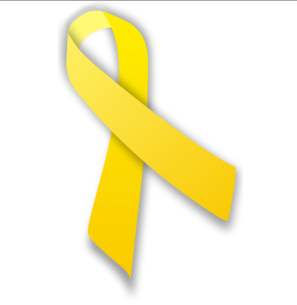Endometriosis Awareness

June 8, 2015
Approximately 176 million women worldwide have an illness called Endometriosis and while this is a huge population, it is a relatively unknown and unacknowledged illness. I happen to be one of those 176 million.
I knew something was wrong when I was about 11; I began having menstrual cramps and morning nausea like no other. The pain was like a string of barbed wire tangled in my stomach, cutting deeper with every move I made. Additionally, every morning I woke up I felt like I had a flu which never went away. I was overbearingly sick and could not find the answer as to why. I bounced from doctor to doctor, test to test, trying to find the missing puzzle piece.
After three and a half years searching for answers, I came across a doctor who thought he’d figured it out, diagnosing me with Endometriosis, a condition where the tissue of the uterus lining grows outside the uterus causing painful lesions and cysts to grow and form. According to Endometriosis.org, “Endometriosis affects an estimated 1 in 10 women during their reproductive years.” My biggest question was, if this was so common, why haven’t I heard of it?
This question is the issue many women diagnosed with Endometriosis face. Although it is remarkably common, there is no cure resulting in months of painful shots, multiple surgeries and medicine for most women to cope. On average, it takes about 7 years to reach a diagnosis. Luckily for me, I only had to face 3 years of confused doctors. In addition, Endometriosis is what is called an “Invisible illness” so it is not noticeable to the normal human eye. That is a dilemma for women with Endometriosis because people around them have a hard time understanding how they could look completely normal. It’s not like the chicken pox where you get spots or eczema where you get skin irritation.
In my case, I received six months worth of painful shots of a drug called Lupron, to attempt to make the Endometriosis dissolve. While it was only one shot per month, the effects from it lasted the whole month. I would go from feeling like I was in the hot desert sun, to crying for no reason, to nights with little sleep. For many women though once treatments over, its about learning to deal with the debilitating pain and fatigue that comes along with it.
Endometriosis is definitely something which requires more awareness, particularly in teenagers. For myself, I was lucky to have found a diagnosis 3 years later, and that is saying something. Although many women struggle with Endometriosis for her whole life, there are success stories and bright spots in the picture. Art teacher, Danielle Crowe was diagnosed with Endometriosis at age 21. “ I am reasonably pain free now and managed to have two kids,” said Crowe. If you think you can relate to any of these symptoms, please give your doctor a call and save yourself the years of hurt and pain. “So many of your classmates will face this diagnosis during high school and after and it can feel very lonely if no one is talking about it,” said Crowe.
